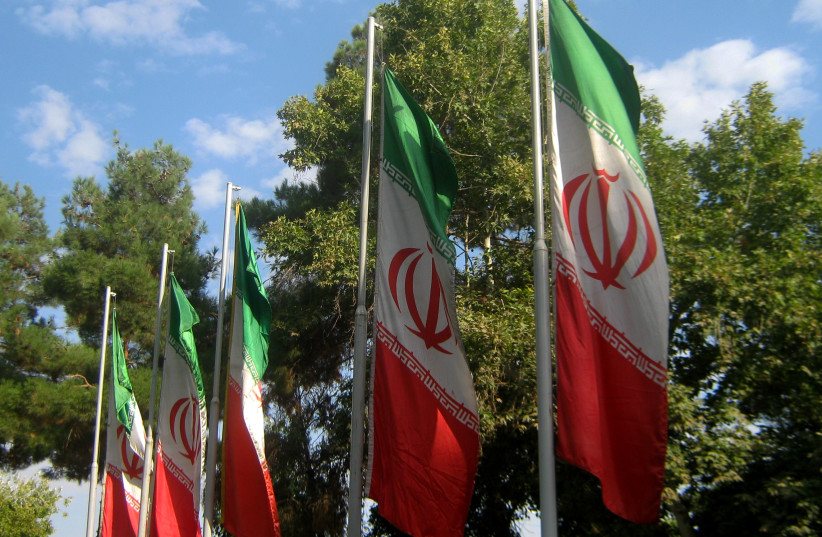Israel’s strategy over the last several years has been to prevent Iranian entrenchment in Syria. This has come to be known as the “campaign between the wars” or “war between the wars.” The concept is that Iran’s tentacles in Syria, which have grown rapidly in the last decade, can be cut off one by one and Tehran may eventually stop regrowing them.
But there are questions about what the overall effect of this will be when the next conflict emerges. While Israel has been doing important joint training with Western and local partners, such as the US Air Force and Marines, the next conflict always looms. That conflict could be a multi-front war.
Iranian media is aware of this and an interesting article this weekend at Tasnim News seems to reveal the extent of Iranian discussion. While Iranian comments last week said Israel was doomed to destruction, and Hezbollah leader Hassan Nasrallah made similar threats, this is clearly propaganda.
The real discussion is done behind the scenes and is about Israel’s strategy and tactics. Iran must weigh this question before it makes any moves in Syria, or even in Iraq where it has brought in drones and ballistic missiles. Reports say that while Tehran may have known about its proxies conspiring to attack the Iraqi prime minister, they were not behind the assassination attempt.
Additional reports, after the UAE’s foreign minister went to Syria for the first time in a decade, say that an Iranian IRGC Quds Force figure may have been chided for an attack on US forces at Tanf garrison.

THIS IS the situation Iran finds itself in this week. So what is the level of discussions?
“The dangerous thing for the Zionists is that despite the military superiority of the Zionist regime under the constant support of the United States, the resistance was able to achieve historic and strategic victories that completely changed the equations of conflict in the region and created new equations that govern the region,” Iran’s Tasnim says. “We are seeing this shift in the balance of power in the region, from Lebanon to Palestine and Iraq and Yemen.”
This means Iran thinks that it has gained a major advantage in recent years. This despite the former US administration’s “maximum pressure” campaign. Iran actually achieved major success in Kirkuk in 2017 and in Albukamal in 2018 – and then later in southern Syria and via moving drones and assets to Syria – and the US policy did not prevent this. Israel’s war between the wars was supposed to reduce the entrenchment and movement of precision guided munitions to Hezbollah.
Iran acknowledges that Israel’s Defense Minister Benny Gantz has said that “Israel would never allow Hezbollah and its Iranian allies to target Israel's military superiority,” Tasnim notes. “The Israeli war minister's [Defense Minister Gantz] remarks came as a justification for the anti-Syrian regime's aggression. The Zionists believe that a large part of the power of the Syrian resistance army comes from Hezbollah in Lebanon and that Hezbollah's influence in Syria must be stopped.”
Iran says that Gantz recently hosted a US delegation at a new Rafael Advanced Defense Systems facility at Shlomi in Israel.
“It is trying to increase its power and upset the regional balance," the reports say. "The important point in the remarks of the Israeli Minister of War is that his remarks come more than a year after the signing of an agreement with the US Department of Defense. The Israeli agreement with the United States is based on a strategic plan to protect Israel's military superiority in the Middle East for years to come.” It was not clear exactly what agreement this refers to.
IRAN'S REPORT goes on to note that Israel's Chief of Staff Lt.-Gen. Aviv Kohavi had warned about the “narrowing of the Israeli military's superiority gap with Lebanon's Hezbollah and resistance in the Gaza Strip, noting that the IDF should take the initiative to regain its strength and increase that distance.”
"This indicates that the development capabilities of Hezbollah and the resistance axis have increased,” Iran says, and that Hezbollah is a major concern for Israel. It is a “major challenge for the [Israel] regime's intelligence, military and political institutions; the results of the recent conflicts that the Zionist regime has experienced in its surroundings, especially the Battle of the Sword of Jerusalem [May 2021 Gaza conflict], prove this fact.”
Iran has concluded that Israel may be “incapable of engaging in a war or escalating tensions to the point of exploding the situation in the region.” The report says that Israel is trying to maintain its qualitative military edge (QME) but that it has always faced a threat since the 1950s and will “not be able to solve its geographical and demographic weakness.” The report indicates that despite advanced weapons, the concern won’t change.
The report examines Israel’s strategy since the time of Ben-Gurion, as well as US policy, which has sought to guarantee the QME. “A practical example of this is that under former US presidents George W. Bush and Barack Obama, two 10-year agreements were signed between the United States and the Zionist regime, according to which the United States is obliged to enter into any arms deals with other countries. The Middle East must respect the principle of not harming Israel's military superiority.”
SO WHAT does Iran think will happen?
The report says that “the Islamic Republic of Iran, despite the siege and the numerous wars imposed on it, has succeeded in several areas of military and missile technology to an advanced level of capability and development.” This has created a new “regional reality” that “challenges Israel's military superiority and dangerous scenarios for this."
It claims that “after the defeat of the war strategy between the wars [campaign between the wars] – in the light of the information and evaluations of the Israeli institutions of the resistance [i.e Hezbollah] capabilities – the Zionist regime has carried out extensive maneuvers in different periods.
